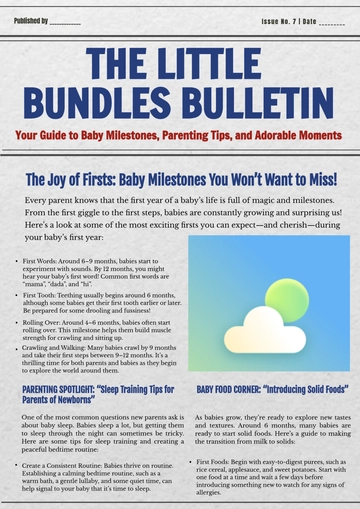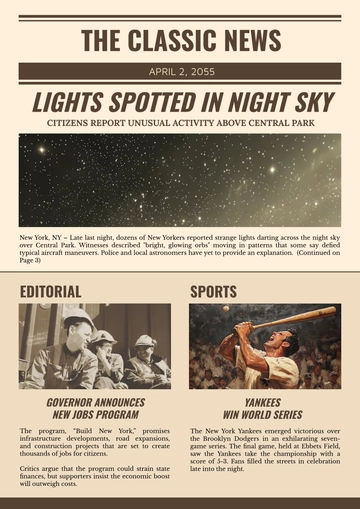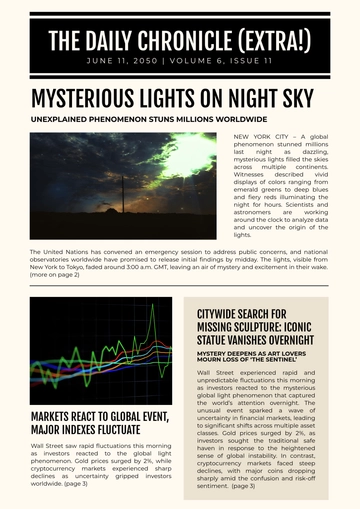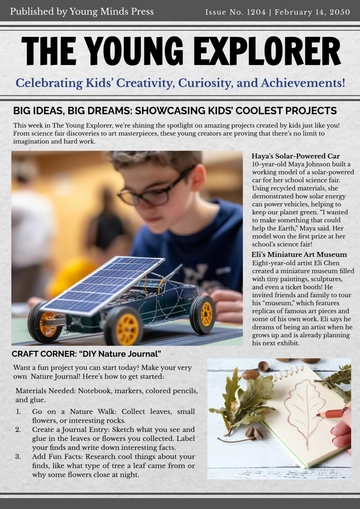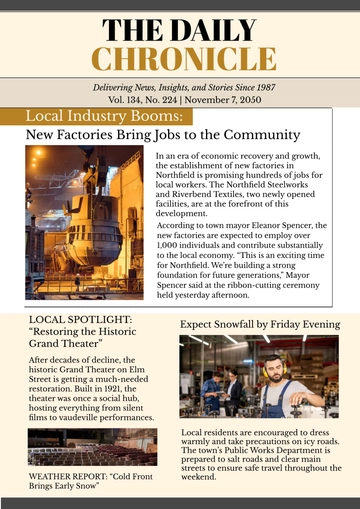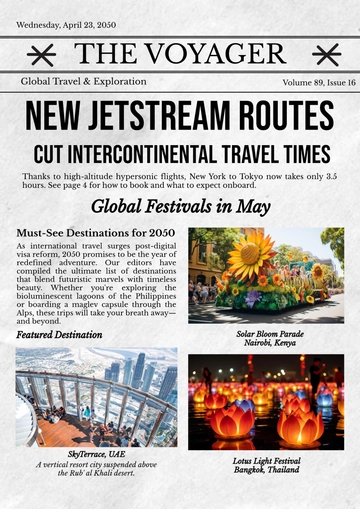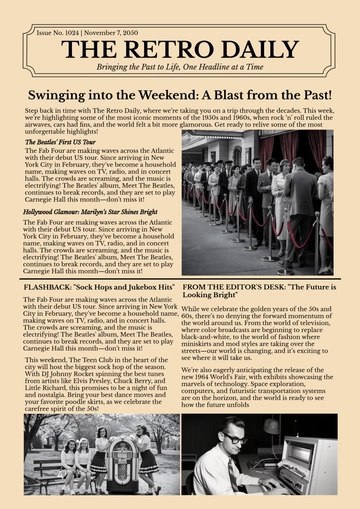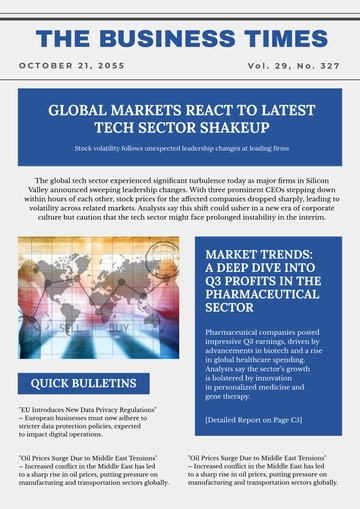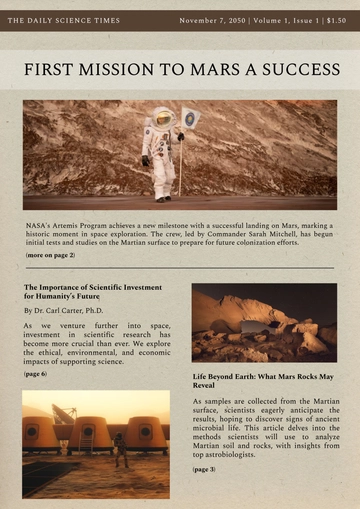Free High-Impact Newspaper Article

Prepared by: [YOUR NAME]
Date: [DATE]
Introduction
In an era where the speed and volume of information are unprecedented, journalism is experiencing a profound transformation. As traditional news outlets adapt to the digital age, they are increasingly incorporating data-driven insights and innovative storytelling techniques to capture and retain reader attention. This shift is not merely a change in how news is reported but a fundamental evolution in how stories are told and consumed. By merging rigorous data analysis with compelling narratives, modern journalism aims to provide more depth and context to the stories that shape our world.

The New Era of Journalism
In an age where information is more accessible than ever, traditional journalism is undergoing a radical transformation. As digital media continues to dominate, news organizations are adapting by embracing new technologies and storytelling techniques. This shift not only changes how news is produced but also how it is consumed and understood.

Data-Driven Reporting: The New Standard
Gone are the days when news was solely about reporting events as they happened. Today, data has become a crucial component of high-impact journalism. Newsrooms are increasingly turning to data analytics to uncover trends, identify issues, and provide deeper insights into stories. The rise of big data and advanced analytics tools allows journalists to sift through vast amounts of information to find patterns and facts that might otherwise go unnoticed.

For example, investigative reports now often involve complex data visualizations that help readers grasp intricate details at a glance. Interactive maps, graphs, and charts not only enhance the storytelling but also engage readers in a more meaningful way. By turning raw data into compelling visual narratives, journalists can shed light on critical issues such as climate change, income inequality, and political corruption with unprecedented clarity.
Storytelling: Crafting Compelling Narratives
Despite the influx of data, the essence of journalism remains storytelling. Modern journalists are leveraging multimedia tools to create immersive and engaging narratives. From podcast series to interactive web features, storytelling in journalism is evolving to include a range of formats that cater to diverse audience preferences.
Strong storytelling combines factual reporting with emotional resonance. Through personal interviews, on-the-ground reporting, and rich multimedia content, journalists can create stories that not only inform but also resonate with readers on a personal level. This approach helps to humanize complex issues and make them more relatable, thereby increasing reader engagement and impact.
The Role of Technology in News Production
Technology plays a pivotal role in the modern newsroom. Artificial intelligence and machine learning algorithms are now used to automate routine tasks such as transcribing interviews or sorting through large volumes of content. These tools free up journalists to focus on more creative and analytical aspects of their work.

Furthermore, advancements in virtual reality (VR) and augmented reality (AR) are beginning to revolutionize how news is presented. VR allows readers to experience stories from a first-person perspective, while AR can overlay additional information onto real-world scenes. These technologies provide new ways to engage audiences and enhance their understanding of the news.
Challenges and Ethical Considerations
With these advancements come significant challenges. The abundance of data and the speed at which news is disseminated can lead to issues of accuracy and misinformation. Journalists must navigate these challenges while maintaining the integrity of their reporting. Ensuring the reliability of data sources and providing transparent, fact-checked information is crucial in maintaining public trust.
Moreover, the rise of algorithm-driven content raises questions about bias and the potential for echo chambers. As news organizations rely more on algorithms to tailor content to individual preferences, there is a risk of reinforcing existing biases and limiting exposure to diverse perspectives.
Looking Ahead: The Future of Journalism
The future of journalism promises continued innovation and adaptation. As technology advances, journalists will have new tools and platforms at their disposal to tell stories in more dynamic and engaging ways. However, the core principles of journalism—accuracy, fairness, and clarity—will remain essential.
In this evolving landscape, the challenge will be to balance the benefits of new technologies with the need for responsible, ethical reporting. By embracing both data and storytelling, journalists can continue to inform, engage, and inspire audiences in an ever-changing world.
Conclusion
As journalism continues to evolve, the integration of data and storytelling is redefining the landscape of news reporting. The advancements in technology offer powerful tools to enhance both the depth and engagement of journalistic content. However, with these opportunities come challenges that demand a careful balance between innovation and ethical integrity. Looking ahead, the future of journalism will likely be marked by an ongoing quest to blend accurate reporting with immersive storytelling, ensuring that news remains not only informative but also impactful and meaningful in our rapidly changing world.
- 100% Customizable, free editor
- Access 1 Million+ Templates, photo’s & graphics
- Download or share as a template
- Click and replace photos, graphics, text, backgrounds
- Resize, crop, AI write & more
- Access advanced editor
Unlock the power of compelling journalism with the High-Impact Newspaper Article Template from Template.net. This fully customizable template is editable in our AI Editor Tool, allowing for seamless personalization and professional results. Perfect for creating striking articles, it combines ease of use with high-impact design to elevate your news stories.
